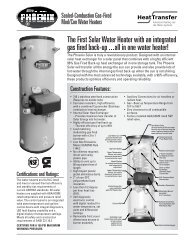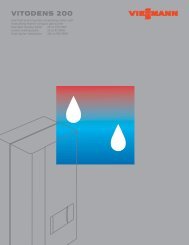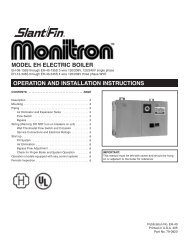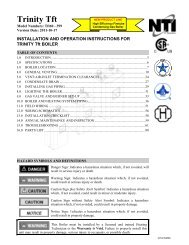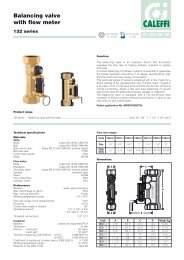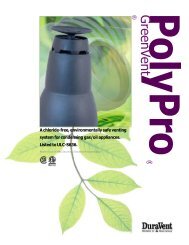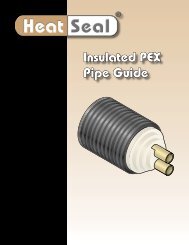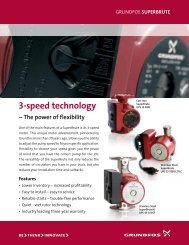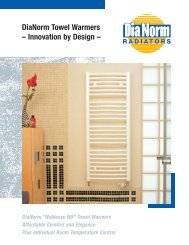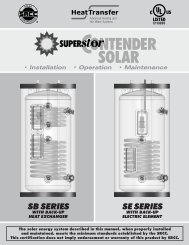Apricus Solar Water Heating System Installation and Operation ...
Apricus Solar Water Heating System Installation and Operation ...
Apricus Solar Water Heating System Installation and Operation ...
Create successful ePaper yourself
Turn your PDF publications into a flip-book with our unique Google optimized e-Paper software.
<strong>Apricus</strong> <strong>Solar</strong> Collector <strong>Installation</strong> & <strong>Operation</strong> Manual - USAb) If the roof faces E-W rather than South, there are a few options:i) The collector angle can be raised up to 60-70° <strong>and</strong> positionednear the peak of the roof so that both the front <strong>and</strong> back of theevacuated tubes can be exposed to light. See image to the right. Insuch a position wind loading must be carefully considered.ii) A second option is to mount the collector on the side of the roofas shown in image to the right. This configuration will loose someafternoon or morning light if located on the east or west sidesrespectively, but still provides good output. The heat pipes <strong>and</strong>manifold will operate fine in this configuration. The “sun tracking”curve (Incidence Angle Modifier or IAM) will be different than anormally installed collector. Applying st<strong>and</strong>ard IAM adjustments toany energy output calculations will not be entirely valid.Note: In either of the above configurations wind loading must becarefully considered. For more information on wind loading refer tosection 3.13.3.2.2. Collector Planea) The collector manifold is normally installed on the flat horizontal plane, but may be installed at an anglesuch as when installed sideways on an pitched roof. See previous 3.2.1.b.ii.b) The collector must not be installed up-side-down (tubes pointing upwards) or with tubes lying horizontally,because the heat pipes will not function.3.2.3. Collector Anglea) The solar collector should be installed at an angle between 20-80° rom horizontal to ensure optimal heatpipe operation. In areas prone to hail, a minimum angle of 45° is advisable (see section 3.16). In areasprone to snow, 45° or higher is advisable (see section 3.14) Even with snow sitting on the bottom of tubes,the heat pipes will work effectively to produce heat, since the aluminum fins tend to conduct heat evenlythroughout the full inner tube length.c) Under no circumstances should the collector be oriented more than 90° (East or West) from True South,i.e. Do not mount the collector North.3.2.4. Avoid Shadea) Collectors should be located so that shading does notoccur between 9 am - 3 pm, which are the peak solarhours. Use of a solar shading analysis tool, such as the<strong>Solar</strong> Pathfinder is recommended.b) Partial shading due to small objects such as antennas<strong>and</strong> small flues is not a problem.c) If installing multiple rows of collectors, consider theshading of collectors on the row behind (especially in winter when the shadows will be longer). <strong>Apricus</strong>provides a simple Excel based calculator for determine the length of midday shade at different installationangles.3.2.5. Proximitya) The collector should be positioned as close as possible to the storage tank to avoid long pipe runs. Innew installations, storage tank positioning should therefore consider the location of the solar collector. Longpipe runs will require the pump to use more power due to greater head pressure (line losses). In addition,there will be greater heat loss <strong>and</strong> increased pipe <strong>and</strong> insulation cost.b) The storage tank should also be located as close as possible to the most frequent draw off points in thebuilding or an intelligently controlled hot water ring-mains recirculation line should be installed.Copyright 2011 – <strong>Apricus</strong> Inc Doc: A7-05.4.1.4-PB-1.9 Page 13 of 126



